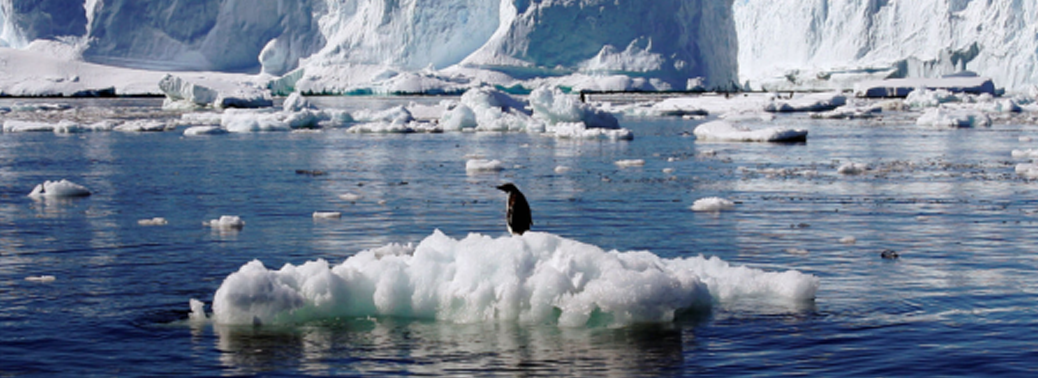MELTING ANTARCTICA
18, Feb 2020

Prelims level : Climate change and its Impacts
Mains level : GS-III Conservation, Environmental Pollution and Degradation, Environmental Impact Assessment.
Context:
- The Antarctic region has registered its highest-ever temperature on record as mercury soared over 20 degrees Celsius earlier in the first week of February, 2020. Researchers logged 20.75 degrees Celsius on an island off the coast of the continent in February – a record high temperature never seen before in the region.
Key Facts:
- The Antarctic has registered a temperature of more than 20oC (68F) for the first time on record, prompting fears of climate instability in the world’s greatest repository of ice.
- The 20.75 degree Celcius logged by Brazilian scientists at Seymour Island in February,2020 was almost a full degree higher than the previous record of 19.8C, taken on Signy Island in January 1982.
- Also,this February an Argentinian research station at Esperanza measured 18.3C, which was the highest reading on the continental Antarctic peninsula.
- These records will need to be confirmed by the World Meteorological Organization, but they are consistent with a broader trend on the peninsula and nearby islands, which have warmed by almost 3C since the pre-industrial era – one of the fastest rates on the planet.
- Scientists, who collect the data from remote monitoring stations every three days, described the new record as “incredible and abnormal”.
- Although the new temperature reading was not part of a wider study, scientists warn it is enough to indicate how fast Antarctica is warming.
- The temperature of the peninsula, the South Shetland Islands and the James Ross archipelago, which Seymour is part of, has been erratic over the past 20 years.
Why are Ice Sheets Important?
- Ice sheets contain enormous quantities of frozen water. If the Greenland Ice Sheet melted, scientists estimate that sea level would rise about 6 meters (20 feet). If the Antarctic Ice Sheet melted, sea level would rise by about 60 meters (200 feet).
- The Greenland and Antarctic ice sheets also influence weather and climate. Large high-altitude plateaus on the ice caps alter storm tracks and create cold downslope winds close to the ice surface.
- In addition, the layers of ice blanketing Greenland and Antarctica contain a unique record of Earth’s climate history.
What can ice sheets tell us about Earth’s Climate History?
- Scientists extract ice cores from ice sheets and ice caps, studying them to learn about past changes in Earth’s climate.
- Ice sheets are made up of layers of snow and ice that collected over millions of years.
- Those layers contain trapped gases, dust, and water molecules that scientists can use to study past climates and environment.

The Antarctic Melt:
- The climatic changes in the atmosphere is closely related to changes in permafrost and the ocean.
- The impacts of climate change vary across Antarctica, which encompasses the land, islands and ocean south of 60 degrees latitude.
- The Antarctic region stores about 70% of the world’s fresh water in the form of snow and ice. If it were all to melt, sea levels would rise by 50 to 60 metres.
- UN scientists predict oceans will be between 30cm and 110cm higher by the end of this century, depending on human efforts to reduce emissions and the sensitivity of ice sheets.
- While temperatures in eastern and central Antarctica are relatively stable, there are growing concerns about west Antarctica, where warming oceans are undermining the huge Thwaites and Pine Island glaciers.
- Until now, this has led to a relatively low amount of sea-level rise, but this could change rapidly if there is a sustained jump in temperature.
- The Antarctic peninsula – that stretches towards Argentina – is most dramatically affected.
- While some degree of melt occurs every summer, scientists argue that it had been more evident in recent years, with temperatures rising more quickly in winter.
- This rise in temperature has caused an alarming decline of more than 50% in chinstrap penguin colonies, which are dependent on sea ice.
- The amount of ice lost annually from the Antarctic ice sheet increased at least six-fold between 1979 and 2017.






